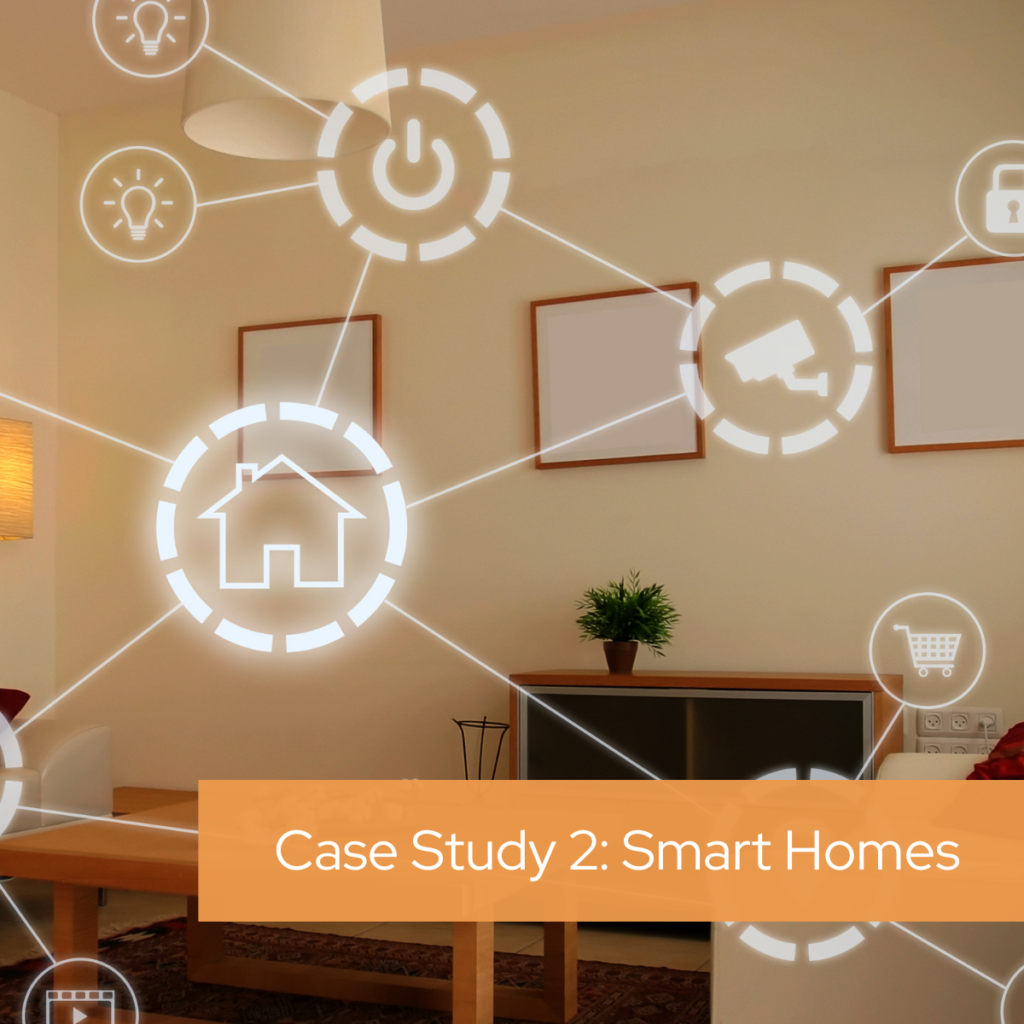Case Study 2: Smart Homes
AGENCY’s smart home case study examines the digital risks, harms, and vulnerabilities associated with the Internet of Things (IoT) ecosystem in domestic settings. Smart home systems provide many benefits that enhance the well-being of their users. Smart home technologies aim to promote autonomy and agency, particularly for individuals with health challenges and other vulnerabilities, by simplifying daily routines. However, as these technologies become more accessible and affordable, they have become susceptible to varying levels of digital abuse, leading to concerns about tech-enabled domestic violence that generate complex ethical and security concerns. “Tech abuse” in smart homes covers various forms of harm including harassment, monitoring, and revenge. Often, bad actors exploit the intimate knowledge of victims, their daily routines, and digital preferences. Smart devices can also be subject to external harms involving surveillance by relevant authorities, hacking, and adversarial attacks. Other examples include remotely controlling, spying through audio and video functions, and altering smart thermostats to traumatize user living conditions. AGENCY’s smart home case study seeks citizen-centred design solutions to these vulnerabilities, risks, and harms. This case study’s aim is to identify methods to enhance privacy and security and cede more autonomy and agency to users rendered vulnerable by smart home technologies according to varied contexts of use.
Within this case study, our objectives are to:
- Investigate the complex digital harms associated with smart home technologies to determine the range of privacy and security risks encountered by diverse household types, including a focus on smart-enabled intimate partner abuse.
- Hold workshops and engage in dialogue with relevant stakeholders and industry partners to determine the types, scale and causes of smart home security and privacy breaches implicated in the use of smart home systems and devices.
- Hold a series of collaborative design-led workshops with smart home users and stakeholders to identify potential design solutions
- Establish common scenarios that reflect the types of devices and social situations that can trigger smart home risks and potential harms.
- Advance innovative design-led research for the modelling of harm reducing smart home technologies to mitigate the complex digital harms involved in smart-enabled household practises.
These research initiatives seek to tackle smart enabled complex harms encountered in and beyond the home by providing the relevant knowledge and expertise required to (a) advance robust design solutions and (b) inform and guide smart home design strategies and standards, corporate principles, and policy.

